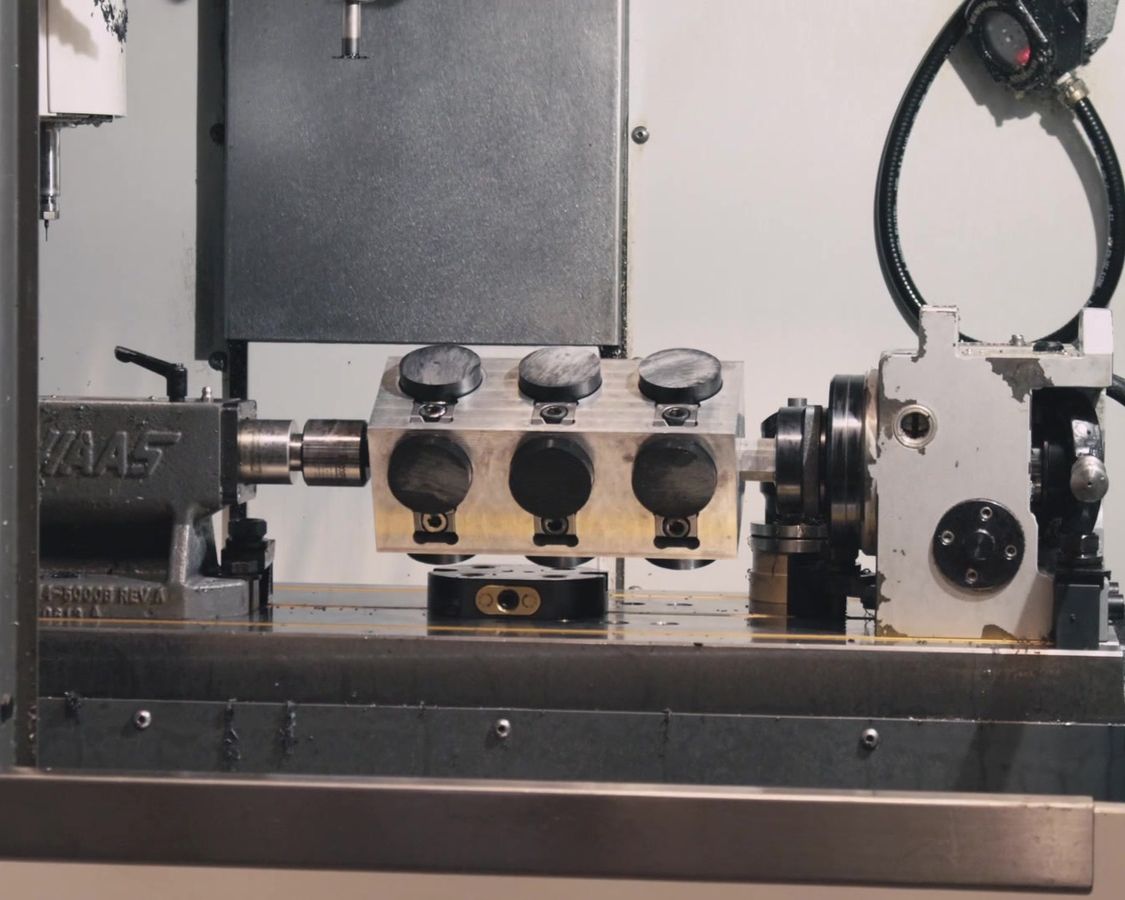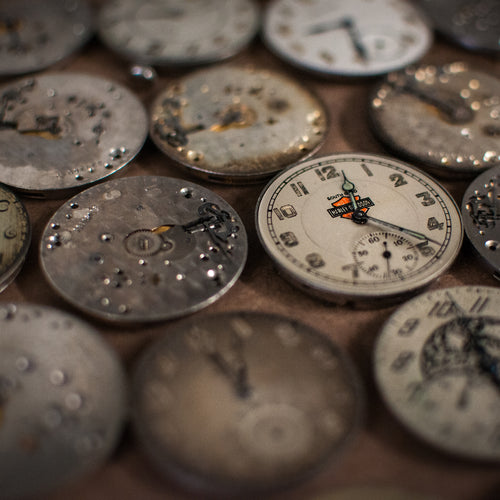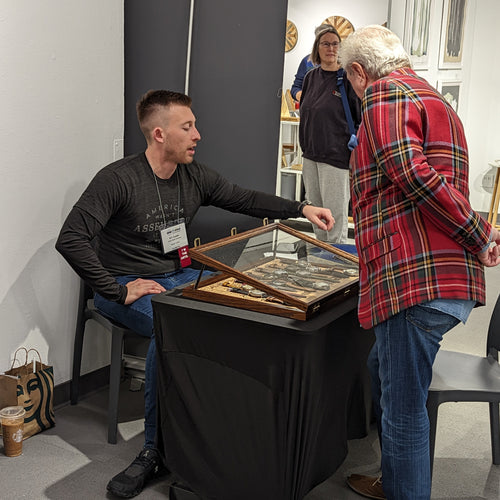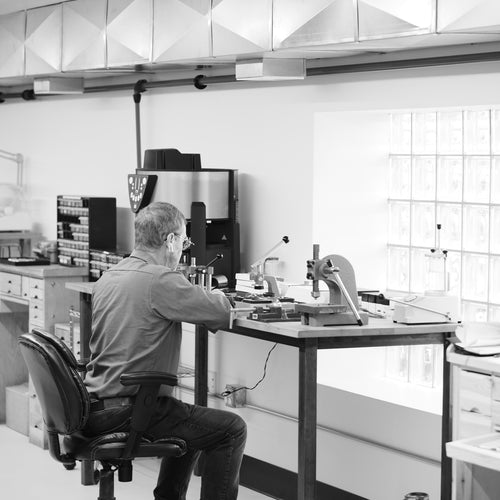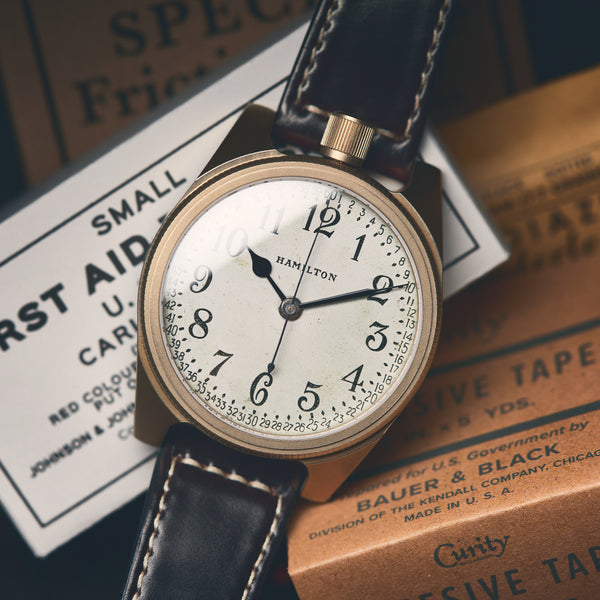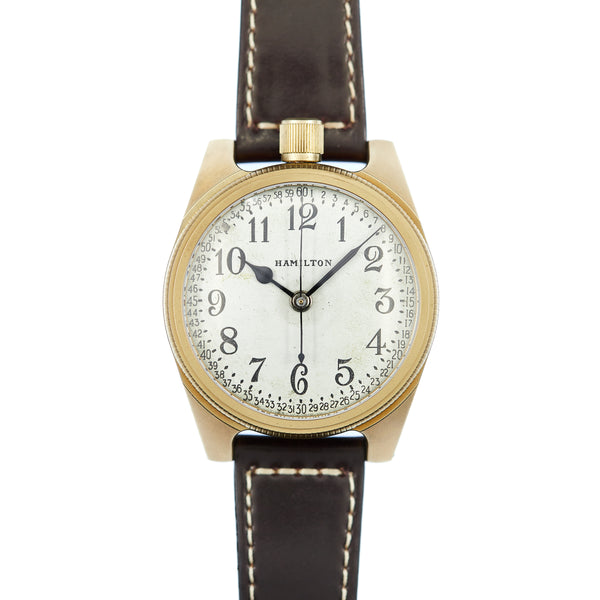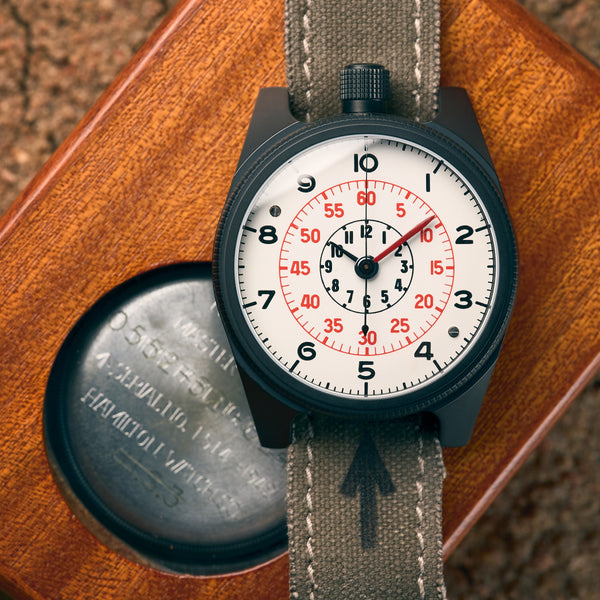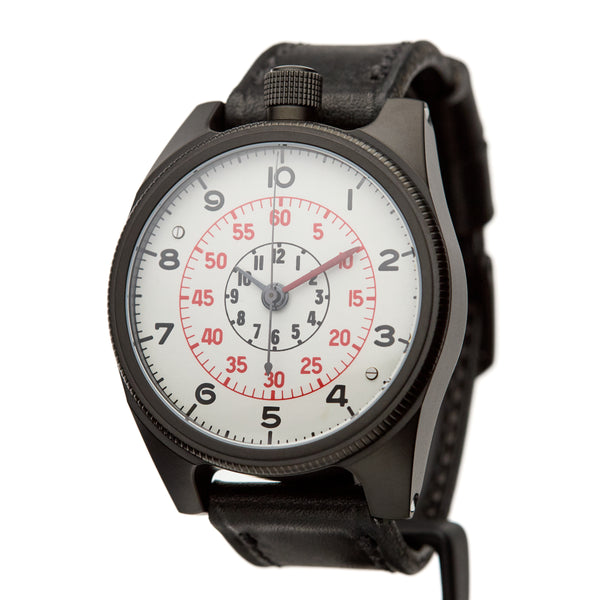What is a tombstone workholding, and how is it used in machining?
You might hear the word tombstone and immediately think about someone’s final resting place or the town in Arizona that hosted the O.K. Corral shootout. That’s understandable, but in the machining world, tombstones have a totally different meaning that doesn’t involve someone passing away!
A tombstone is a type of workholding used in four-axis machining that allows for multiple operations to be performed without having to reset after each operation. Each side of the four-sided tombstone can hold many pieces to be machined, and the workholding can spin to the next side for the next operation to happen. This helps not only speed up production but also yields four times the number of parts that could be made if not utilizing a tombstone.
Usually, both R.T. and Tyler would be guiding you through the latest happenings at Vortic Watches, but Tyler’s front and center this time. Everything we do at Vortic Watch Company — the only American-made watch brand — is centered on our machining processes, and that’s Tyler’s domain. So, he’s going to lead us through a walkthrough of how we use tombstone workholdings to produce our one-of-a-kind timepieces!
We’ve been sharing our story covering our transition into our current facility to the lessons we’ve learned about business and American craftsmanship on “Custer & Wolfe: Building a Watch Company” through our YouTube channel and article series.
We’re so happy to have you along with us on this journey, and we’re excited to share how tombstone workholdings have helped us create many of the parts for our built in America— not assembled — watches!
What Is a Machining Tombstone?
Tombstones are workholdings used in multi-axis machining, and we use them for four-axis machining on our mills.
Before diving in further, let’s talk a little more about what we mean with some of these terms we’re throwing around. When it comes to machining a part, workholding is a term used to describe holding the part in a fixed position to allow for precise fabrication within a specified level of tolerance. Workholding consists of two primary components: The actual workholding tool, such as a vise to hold the piece in place, and fixture plates or any other device which can firmly position the part in the machine. We use a few different types of workholdings, from palletized ones to the tombstones we’re talking about here.
When we’re discussing multi-axis machining, we’re talking about computer numerical control (CNC) machining that uses advanced machining equipment and tooling. These milling machines utilize motion in four or more directions to manufacture precision parts that have complex geometric shapes. We currently use both four and five-axis mills in our production.
These tombstones work so well for us because they give us four different sides that we can work on. The tombstone lets us take a surface area that might only allow us to produce three parts and multiply it by four. Instead of only being able to work on three parts at a time, we're able to rotate the whole tombstone and work on all four sides, producing twelve parts at once.

“[‘Tombstone’ is] kind of an interesting name to call something that we're machining with. I believe the name comes from the fact that these things are kind of shaped like a tombstone, and I don't think it's too much more complicated than that.” — Tyler Wolfe
More elaborate tombstone systems will be palletized, as we talk about in our What Is a Pallet video, but our tombstone system is a little bit different than that. Palletized workholding is used in CNC machining to enable multiple operations to be performed by the machine without the need to set each operation up one at a time. Zero-point workholding systems enable users to load and unload these palletized workholders to and from specialized permanent fixtures mounted to the machine.
Both of these systems streamline and expedite machining processes greatly and ensure greater precision in the machining. However, we use different tombstones in our multiple-operation machining to produce different parts to create our unique Vortic Watches.
How We Use Tombstones at Vortic
The tombstones we use in our milling machines have a few different purposes. One of these tombstones is made specifically to hold 12 pieces of two-inch round material. These pieces can be different heights and materials, allowing us to produce different inserts for multiple watch styles at once. We can prep our two-inch stock for case backs and bezels on that same tombstone, as well.

We use a different tombstone for prepping our case material. Generally speaking, we're putting big pucks of titanium in this tombstone, which can hold six pucks at a time. The tombstone holds two pucks each on two of the sides and a single puck on each of the other two sides. This setup lets us produce six cases from one operation in our mills.
We use another tombstone workholding to produce the buckles for our watch bands. This tombstone lets us load one big piece of titanium on two of the sides to cut ten buckles from each one. We then take the cut buckles and put them in slots on the other two sides of the tombstone.
“Every time we hit the button, we're doing twenty first ops and then twenty second ops. So, each time we're putting in two pieces of material and we're getting 20 finished buckles out of this fixture.” — Tyler Wolfe

Our buckles have rims with holes in them for the spring bar that holds them to the watch strap. In order to machine those holes efficiently, the tombstone will flip and drill those holes from the side. So, we can access the part from three different sides on the tombstone as opposed to if we didn't have one there. Without the tombstone, we could only access the part from one place, and we'd have to set up a secondary operation just to drill those holes.
That's what makes the tombstones so useful in our machining process!
How We Plan to Use Tombstones in the Future
Tombstone workholdings are a vital part of our production processes as we advance here at Vortic.
On our DMG Mori five-axis machine, our plan is to make palletized tombstones that can do one or more cases per side. We'll have the tombstone set up with multiple cases on each side that can rotate in five axes where we can do the case tubes, make holes in the lugs, and actually reduce the number of operations that we're doing.
“[We’ll be able to go] from five operations on a three-axis mill to two operations on a five axis mill and tombstone.” — Tyler Wolfe
Overall, this will help us speed up our production by reducing the amount of time required to change out our machining setups. Where the palletized workholdings we use allow us to do operations on a single plane, the tombstones essentially act like four pallets in one workholding.
“Don't get confused by the term tombstone. I think it’s just describing the shape, but this is a good way to hold a lot of parts at one time and access them from all different sides.” — Tyler Wolfe
While the tombstones are usually four-sided, they can actually be any number of sides. Three, four, six — it all just depends on what parts we're making and what our needs are. The tombstones will go in the machine, and they're for multi-axis, so they can move around and access all different sides.
We Keep Refining Our Processes, and We Love Showing You How We Do It!
As we continue to improve our production processes, we’ll keep showing you how we create our watches at Vortic. We’re total nerds for machining and love teaching you all more about how we use our machines to produce our watches. We’ll keep doing these types of technical deep dives as long as you keep joining us for them!

If you’ve got any questions that we can answer about our workholding setups, machining, or if you want to know more about us and our products, reach out to us! We’d be happy to chat with you about the things that make Vortic great and we love to share our passion for the work that we do.
And if you’d like to learn more about our incredible watches, stop by our website. We began creating our American Artisan Series in a garage in Colorado, and we’ve grown so much since then. In addition to our original line, we also build Military Edition and Railroad Edition watches, and we can also take your antique watch and repurpose it through our custom conversion process.
Additionally, you can stay up to date with everything we’re doing here at Vortic by subscribing to the Custer & Wolfe YouTube channel. We cover a variety of topics here, from showcasing our one-of-a-kind watches to the lessons we’ve learned in building Vortic.
Thanks so much for nerding out with us today! We’ll catch you later.

